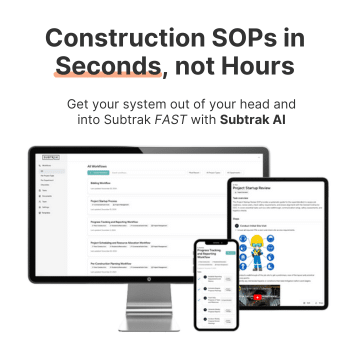Material Inventory Management for Flooring
The Material Inventory Management workflow helps flooring contractors keep track of supplies like tile, wood planks, adhesives, and trim pieces. It covers logging deliveries, monitoring usage, reconciling orders, and updating stock reports. Managers review data to ensure accuracy, prevent shortages, and optimize reorders. By following this workflow, flooring companies protect profitability, improve efficiency, and prevent costly delays. Clients benefit from timely installations supported by dependable material availability. Teams gain accountability through documented oversight. With this workflow in place, flooring contractors can strengthen professionalism, improve efficiency, and deliver projects more reliably with structured material tracking.
Create a master inventory list with item names, descriptions, and unit types
Assign SKU or tracking codes to all regularly stocked materials
Designate storage locations and organize materials for easy access
Log all material deliveries into the inventory system
Record material check-outs to specific projects or crews
Conduct regular cycle counts or full inventory audits
Track reorder points and set minimum/maximum stock levels
Flag slow-moving or excess inventory for review or redistribution
Monitor expiration dates or shelf-life on time-sensitive items
Reconcile physical counts with inventory records regularly
Investigate discrepancies and adjust records as needed
Use software or spreadsheets to manage inventory in real time
Report usage trends to improve forecasting and purchasing decisions
File records of material movement for job costing and reporting
👈 Use this SOP template inside Subtrak
Edit with AI. Customize in seconds. Store and share all your SOPs and checklists in one place.
